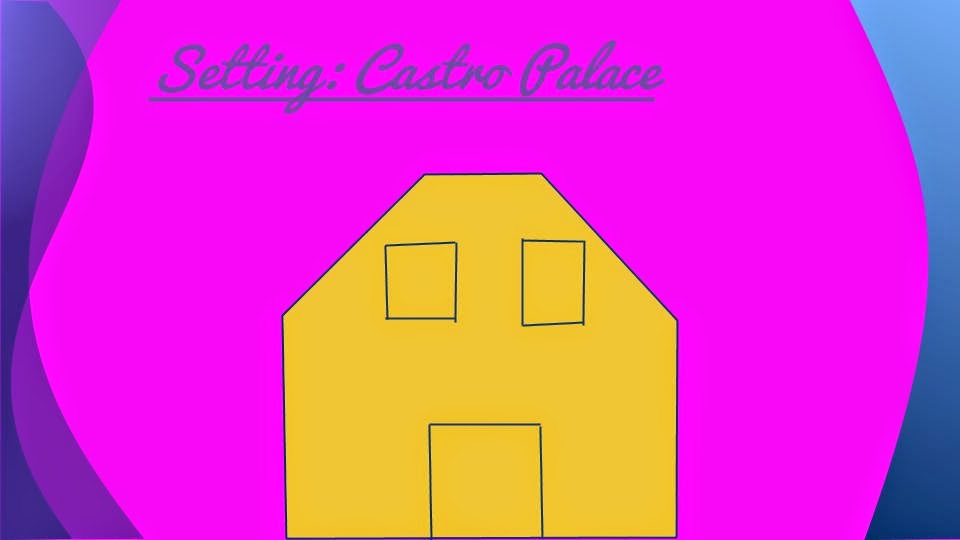[visit #10]
Is this already over?
We have been learning so much and having a terrific time. Neither the students nor myself want this experience to end! This blog post, however, marks the last visit that I had with the incredible students of Mrs. Stone's third grade class.
I decided to try explaining contrast again using the strategy that Vicki had talked with me about last week. I had the students sit down at the front of the class and then I picked out concrete objects in the class and had the students tell me if there was contrast between the objects. We did that with color, size, direction, and a few other components of contrast. By the end, the students really were able to explain and determine contrast more effectively!
Their success in learning as their surroundings (their 'world') are integrated makes me believe in the importance of bringing the real world to students. I think that if teaching does not connect outside of the school setting does a disservice to kids. I want them to become participants in their community, not just passive consumers. This experience reinforced my desire to connect real world situations to the classroom, similar to one of BYU's unofficial mottoes which says "The World is Our Campus."
The rest of the class period today was spent working on the presentations and getting them ready to present. Some of the students were quicker than others and finished early while some were unable to finish their work by the end of class.
Even though I had come up with a few ideas of what those faster-working students could do once they were done, I still had to think on my toes of additional things that would be a meaningful use of their time. I had planned on giving them a one-word prompt for them to explore however they wanted, letting them have free time with the Chromebook, or learn to take photographs with their Chromebooks.
| This student even included a photograph in her presentation. |
One student came back multiple times saying she was done with what I had given her! She was even able to do a test presentation at her desk to see how it would feel to give the presentation. Eventually, her question began to change from "What should I do?" to "Can I do ____?" showing she was building autonomy as a learner. That was fantastic to see (especially because I was running out of ideas for her!). What kinds of systems do you have in place for when students are done early or do not get done at all?
The following is an assortment of the slides that the students have created up to the point. Integrating reading, writing, technology, and art has certainly been a challenge and might have seemed overwhelming at times; but, the final products are looking good and have content that is appropriate for the third-grade level.
 |
| Additional characters were added to this slide and problems with contrast were fixed. Small details were tweaked as the students gained more technology and artistic skills. |
 |
| A lot of the students ended up using arrows to direct a viewer's attention from one part of the slide to another. |
 |
| Adam combined appropriated images with his own drawings. |
.jpg) |
| Marissa liked drawing digitally. Look at that cute dog! |
Some of my main takeaways (as found in my presentation linked below) are the following:
> Teach the children, not the lesson.
> Students trust you so much. Live up to it.
> Let their strengths & personalities show.
> Preparation & reflection go hand in hand.
> Teaching is little more than telling if you don’t
review in their own words.
I feel more prepared to work with students and other teachers to create meaningful learning environments and experiences after having participated in the Arts Bridge program. In the fall of 2015, I am heading to Houston, TX to do my student teaching in Visual Arts and in Spanish! Working with these kids has taught me to expect the unexpected and to roll with the punches that are thrown my way.
 |
| Students hard at work on their digital devices. |
\\\Update\\\
Today was the final celebration of the Arts Bridge experience. Connie and I had the distinction of presenting all of our hard work and the learning that occurred when the visual arts were integrated into other subjects. Our presentation can be viewed here (or by clicking on the image below) and includes additional student work not featured on this blog.
It has been an awesome experience for both Connie and myself as we worked to infuse and naturally integrate the visual arts, We learned to work as a team and use our strengths to complement one another to ultimately create a more fulfilling, worthwhile experience for the students.
I hope you have enjoyed reading this blog and been inspired to look for connections between subject matter to engage students and promote deeper learning!
James Voss
Arts Scholar 2014-2015















